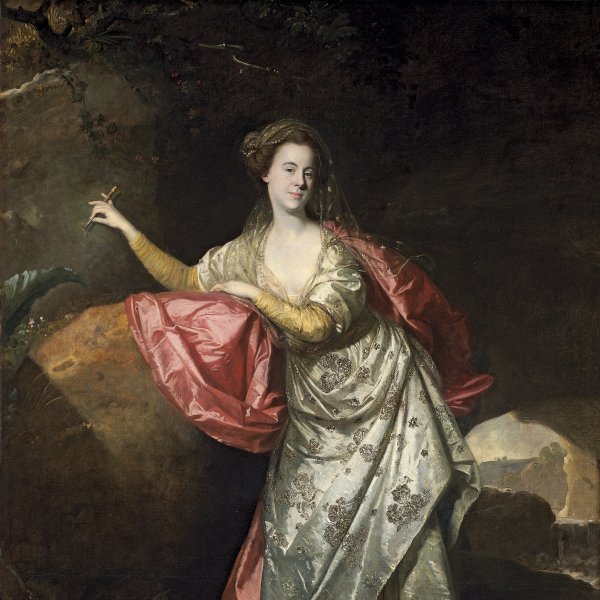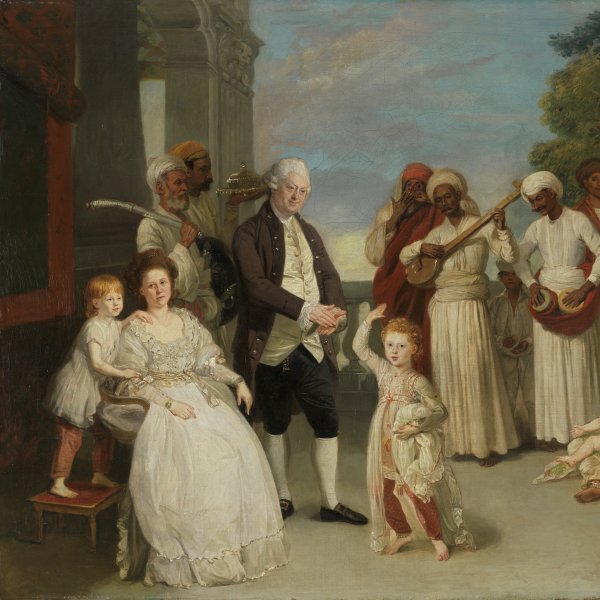Johann Zoffany
Frankfurt, 1733 -Strand-on-the-Green, 1810
Zoffany’s name was originally Johannes Josephus Zauffaly, son of the architect Franz Zauffaly. He began his apprenticeship in the studio of the painter and engraver Martin Speer in Ratisbon. In 1750 he left for Rome where he completed his training with Agostino Masucci and met Mengs. During this early phase Zoffany painted a series of paintings and frescoes for Clement Augustus, Prince-Elector of Trier, in his palaces at Trier and Ehrenbreitstein (now lost).
In 1760 the artist moved to London where he began to work in the studio of Benjamin Wilson. At this point he began to paint small compositions in which groups of figures are engaged in conversation, a format that brought him enormous success and fame. Over the following years he principally worked for the actor David Garrick, for whom he painted a large number of these “conversation pieces” as well as a series of mezzotints of theatrical scenes. These were exhibited at the Society of Actors in 1762 and were highly acclaimed by the public and critics, further consolidating his fame throughout Great Britain. As a result Zoffany began to receive commissions from the British aristocracy, including Lord Bute, who probably presented him to George III and Queen Charlotte in 1763. In works such as Queen Charlotte and her two eldest Sons or George, Prince of Wales and Frederick, Duke of York (both Royal Collection, Windsor Castle) Zoffany depicted the royal family for the first time in an informal manner, marking a radical departure from the traditional type of royal portrait. In 1769 he was elected a member of the Royal Academy, while in 1772, the year that he acquired British citizenship, Zoffany left again for Italy. There he painted one of his most celebrated works, The Tribune of the Uffizi (Royal Collection, Windsor Castle), for Queen Charlotte. He returned to England but his famous conversation pieces were no longer in fashion and he left again in 1783.
In 1760 the artist moved to London where he began to work in the studio of Benjamin Wilson. At this point he began to paint small compositions in which groups of figures are engaged in conversation, a format that brought him enormous success and fame. Over the following years he principally worked for the actor David Garrick, for whom he painted a large number of these “conversation pieces” as well as a series of mezzotints of theatrical scenes. These were exhibited at the Society of Actors in 1762 and were highly acclaimed by the public and critics, further consolidating his fame throughout Great Britain. As a result Zoffany began to receive commissions from the British aristocracy, including Lord Bute, who probably presented him to George III and Queen Charlotte in 1763. In works such as Queen Charlotte and her two eldest Sons or George, Prince of Wales and Frederick, Duke of York (both Royal Collection, Windsor Castle) Zoffany depicted the royal family for the first time in an informal manner, marking a radical departure from the traditional type of royal portrait. In 1769 he was elected a member of the Royal Academy, while in 1772, the year that he acquired British citizenship, Zoffany left again for Italy. There he painted one of his most celebrated works, The Tribune of the Uffizi (Royal Collection, Windsor Castle), for Queen Charlotte. He returned to England but his famous conversation pieces were no longer in fashion and he left again in 1783.






